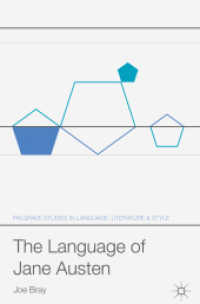- ホーム
- > 洋書
- > 英文書
- > Business / Economics
Full Description
This book presents extensions to current commodity-flow models to analyze the economic and environmental impacts of recent structural changes, such as fragmentation of production and lengthening supply chains.








